Contemporary artist Maxim Svishёv, creator of the YOmoYO project, likes to visualise sound and work with animation in his installations and sculptures.
I do not know what the role of the artist is because the more I live, the less I understand. I just try to follow what is responding, to which I have an arrangement, what is the feeling of my path. And I can’t know how art really affects people. I can say that the combination of a large number of components is very important in the perception of works of art.
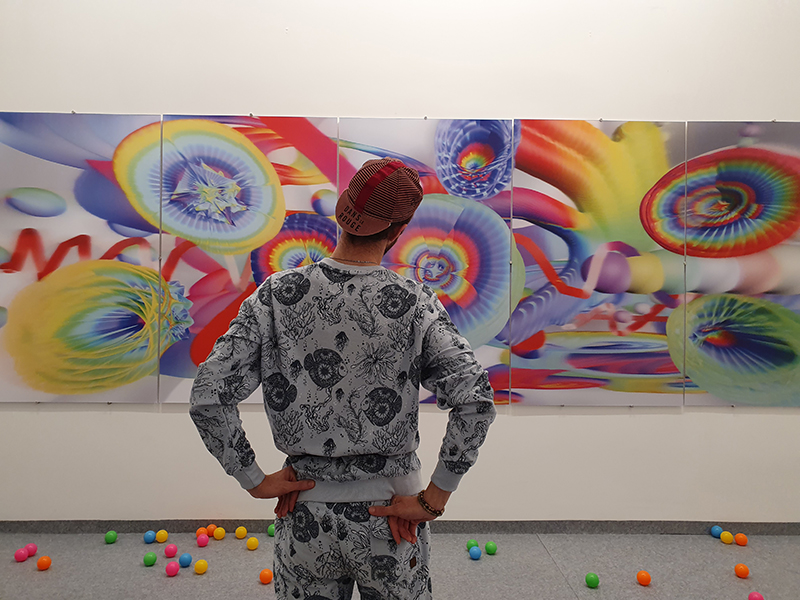
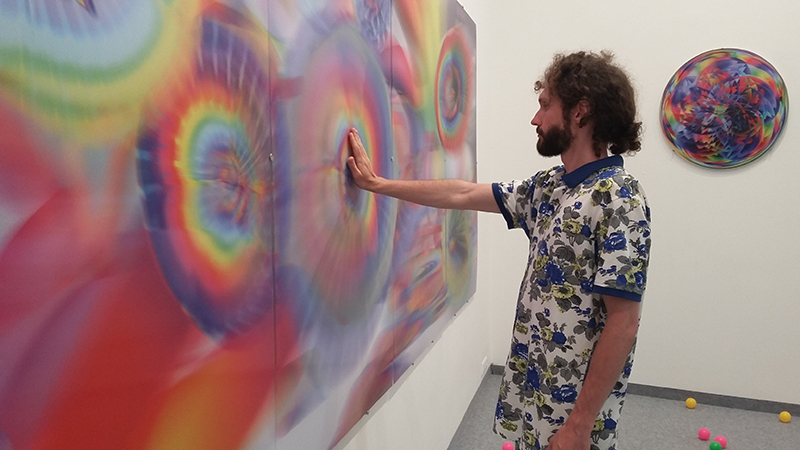
Take us to the beginning of your story, your first touch with art.
When I was three years old, on my birthday my grandmother gave me a box of coloured Plasticine and sculpted some soldiers. It really inspired me. I learned something about it and since then began to sculpt. I think this is where my journey began.
It was the normal for me to sculpt almost every day, and I comprehended various forms, anatomy, and tried to create copies of various figures. Next, I entered the jewellery lyceum. My parents thought I should do something that would be professionally useful and since I sculpted they believed it was close to jewellery making. After that, I entered a pedagogical institute and studied the basics of classical art. While at the institute, I began to go to a computer animation studio, and studied classical animation and worked on a children’s series. These were my first steps in animation. While I saw many videos, I connected with it truly when I saw a video art exhibition at the Russian Museum which was showing the works of Bill Violla, Shirin Neshat and Nam June Paik. Later I discovered Norman McLaren and realised I wanted to do something like that – visualise sound, work with animation.
At that time, I was creating video for clubs and making video design for a large restaurant. This was the first experience with space and with video image of a non-standard scale. This influenced the creation of my first work. Later, I met young people from the project, which came to be known as The Unconquered. And then I was offered a chance to exhibit at a group show of young artists in St. Petersburg in 2008. I showed a video installation and it was my first conscious work. Later I received an offer to exhibit in a gallery, and my first solo exhibition happened. After that, there was no looking back.

Tell us about the evolution of your practice over the years.
Initially, I was exclusively interested in animation and video art. Later, it was media art. For seven years I did nothing else. Everything changed when I went to a residency in Paris, where I won a contemporary art award. The atmosphere in Paris inspired me to draw with my hands and sculpt. I got a new understanding of colour and shape. I wanted to do new things, new images, which I started in Paris and continued after arriving in St. Petersburg. Nobody took these changes seriously. They expected me to continue like before, but internally I wanted to create my own philosophy and language.
It was a difficult period for me as I saw many transitions and obstacles. I had no idea what to do or how to exist. But I watched a lot of media art, video installations and collected many videos for a year. The whole world opened up to me. The Internet made it possible to see what was happening in the whole world in real time. During this period, I had a friend and companion, with whom we created the school of audiovisual art, where one could study media art and work with the latest programs in generative graphics and programming. This endeavour got us acquainted with many people involved in this field in Russia and abroad. We invited specialists from various places to teach.
Soon our activities expanded and saw itself on the stage of the new Alexandrinsky Theatre, which had a robust technical base, good equipment and, all in all, great for education. Here students could take part in the creation of performances as media artists.
At this time, I had many acquaintances who were musicians or composers working in the field of electronic music and audiovisual arts. I participated in the creation of the Centre of Audiovisual Arts, Moscow, one of the first in Russia. Technically sophisticated media installations were exhibited there. We invited artists from around the world and Russia. It was for me a period of immersion in a new form, a new language, and new opportunities for learning technologies.
However, at some point I realised I did not feel any inspiration and had a desire to get rid of all this and begin to engage in the realisation of my inner voice, my inner sound and form. I retired for a month to the village, hung out alone with a computer and created 3D sculptures that came like a stream of consciousness. I began to post it all on Instagram, as examples of what could be in reality though they were virtual projects. A year later, I began to receive proposals to implement the sculptures in a real space. This was my first experience with a large sculpture.
My objects are embodied forms, from the virtual world to the real. I do not use traditional materials like metal, wood, clay, or marble. These are saturating megacities today. I use 3D milling machines, 3D printers, and colour printing. I now want to add of movement to my sculptures. Perhaps I will use diodes to insert a video image into the sculpture or other kinetic elements.

What were your biggest lessons and hurdles along the way? Which is the most memorable moment?
At the institute, our teacher told us that one should not take being an artist too seriously. I began to understand this only after years. It is an interesting paradox: while you must completely surrender to what you are doing, you should not be attached to the activity or what you create. This is very complicated and requires masterful balancing.
As far as difficulties go, the desire to get something from what you have done is painful for the artist. You can lose everything, talent or a gift. So, it’s important to create without thinking what you are going to get in return. Give yourself completely, without thinking about the reward.
One of the most difficult and informative moments was my communication and work with the brilliant composer Oleg Karavaychuk. He lives only via art and the power emanating from him was amazing.

What inspires you? Take us through your process and continuous frameworks of reference.
I am inspired by design. Where the task at hand it to put up an exhibition and there is space, idea, and a budget, it starts to spin. Often I need to stay in the space, and it begins to give me images. Sometimes, I look at space only from a photo, but this also gives a boost to inspiration. The anticipation of realisation itself gives strength and new ideas. I am inspired by stories, autobiographies of various artists, creative people whom I already know a lot. A single image, a motion vector, is formed from them. I am very inspired by nature, sincere manifestations in children, women, and even dance.
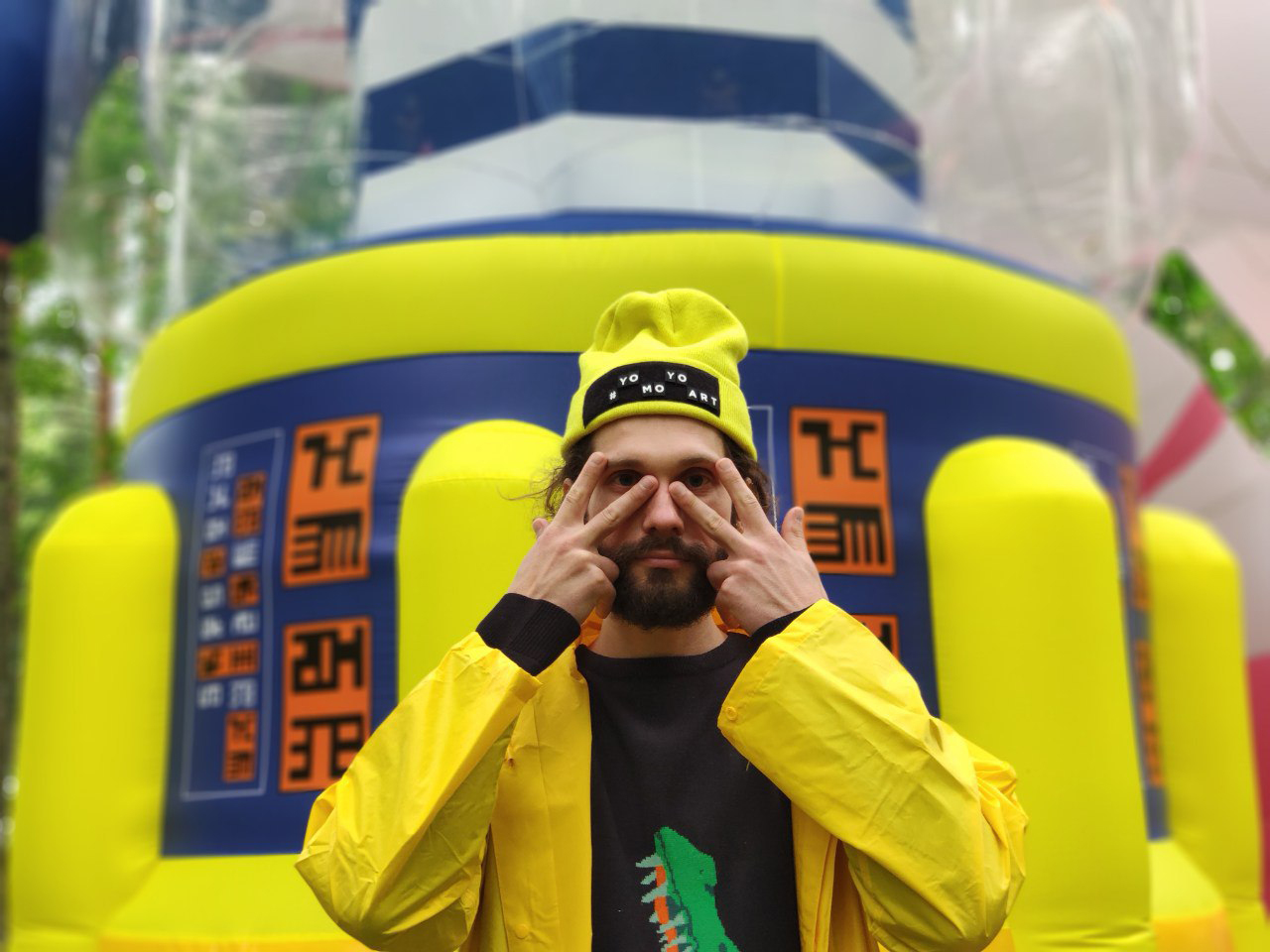
What is the primary role of an artist? How do you describe yourself in the context of challenging people’s perspectives via your work and art?
I do not know what the role of the artist is because the more I live, the less I understand. I just try to follow what is responding, to which I have an arrangement, what is the feeling of my path. And I can’t know how art really affects people. I can say that the combination of a large number of components is very important in the perception of works of art. How many people are prepared for the perception of art, on which particular day a person is looking at the work, what is happening around and inside the person, everything matters. Together, it creates the perception of a work of art. I call it directing life, when all the components add up and a person can feel and realise something and say that he felt it. We can’t be sure it is the work of art alone… this is a difficult question.
What do I want to say with my art? Probably, I just want to convey the delight and joy of creativity that occurs when making a work. At the heart of each person is a creative source and each person can feed from it, interact with it, be a co-creator in any business.
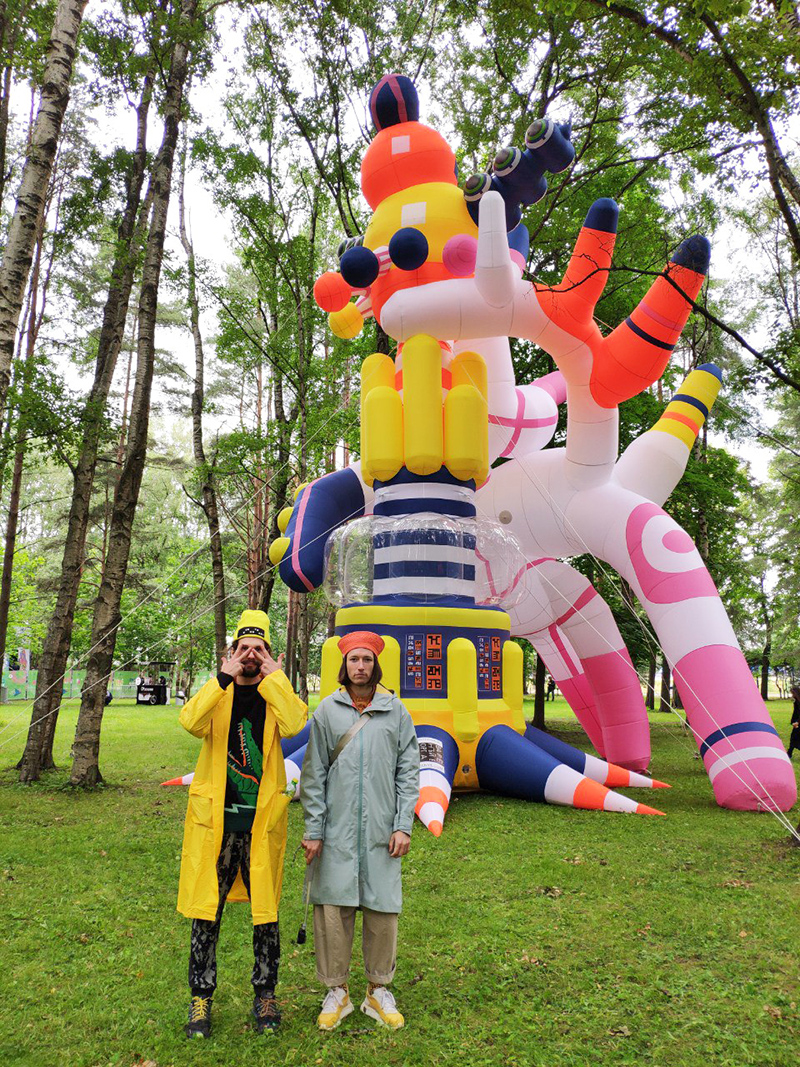
How do you balance art and life?
All the components in my life are intertwined. I do not make any distinction between them. There used to be a distinction, when I had to place orders and earn money. Now it is an indivisible process.
How do you deal with the conceptual difficulty and uncertainty of creating work?
The concept comes later, after the image of the work itself and the feeling from it. The state that I want to express, to convey, is something inexplicable and it calls you to do it. The concept is already taking shape, as a kind of formation of a framework, a border that describes what you are doing.

How does your audience interact and react to the work you put out into the world?
I like to watch people at my exhibitions. Often, I feel pleased to see faces that glow and open up like flowers. I feel pleasure from this, gratitude and a sense of satisfaction. Often I am asked what I used, what types of drugs inspire me to create work. I recently thought about this and came to the conclusion that such thoughts arise when people live clearly within the framework of the mind, where everything should be clear and explicable. In fact, in my work, drugs do not inspire or shape my creative worldview.
Children are very fond of my work. They actively interact with them and like to be in the exhibition space. At my last installation, I got a little fan, an artist who is five years old. He and his mother came to the exhibition more than ten times, commented on it and evaluated it. Children are my favourite viewer, but I still do work for adults… Since children will be fine if everything is fine with adults.
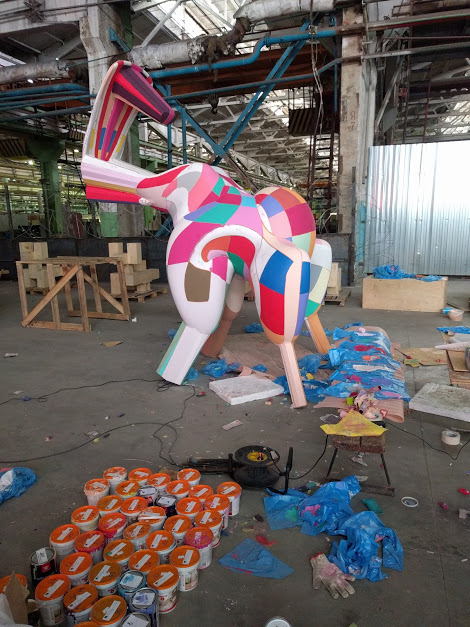
What are you looking for when you look at other artists’ work? Who are your maestros?
I can’t single out any individual because there are so many of them. I am woven from many stories, autobiographies, sayings, and works of art. For example, recently it was a discovery for me to get acquainted with Hundertwasser. I went to see his garbage recycling plant in Vienna. He ran around joyfully, like a child jumping. I was struck by the scale and courage of the realisation of his ideas, his philosophy.
I was strongly influenced by the architecture of Gaudi, the videos of Béjart’s ballet, animated films by Hayao Miyazaki and Norman McLaren, artist Nick Cave, fashion artist Tom Vanderboten, Kandinsky, Fellini, Mathis, Henry Moore, and like folk art. I also have a large collection of images on a computer from a network without signatures, which I periodically turn to for inspiration, though it happens less often now. I rely mostly on inner vision these days.

What is that one thing you wished people would ask you but never do?
If you had the opportunity to be at a certain period of time in any era, past or future, and see the work of artists, how they create their works, the works of extinct or future civilisations, what would you like to see?

How does your interaction with a curator, gallery or client evolve? How do you feel about commissions?
Generally we start with a chat, and then a joint project begins, and most often they develop into friendships. I treat the commissions well. I realised that you need to be profitable for the people with whom you work. Only then will people reach out to you and want to implement projects with you.
Before you go – you might like to browse our Artist Interviews. Interviews of artists and outliers on how to be an artist. Contemporary artists on the source of their creative inspiration.








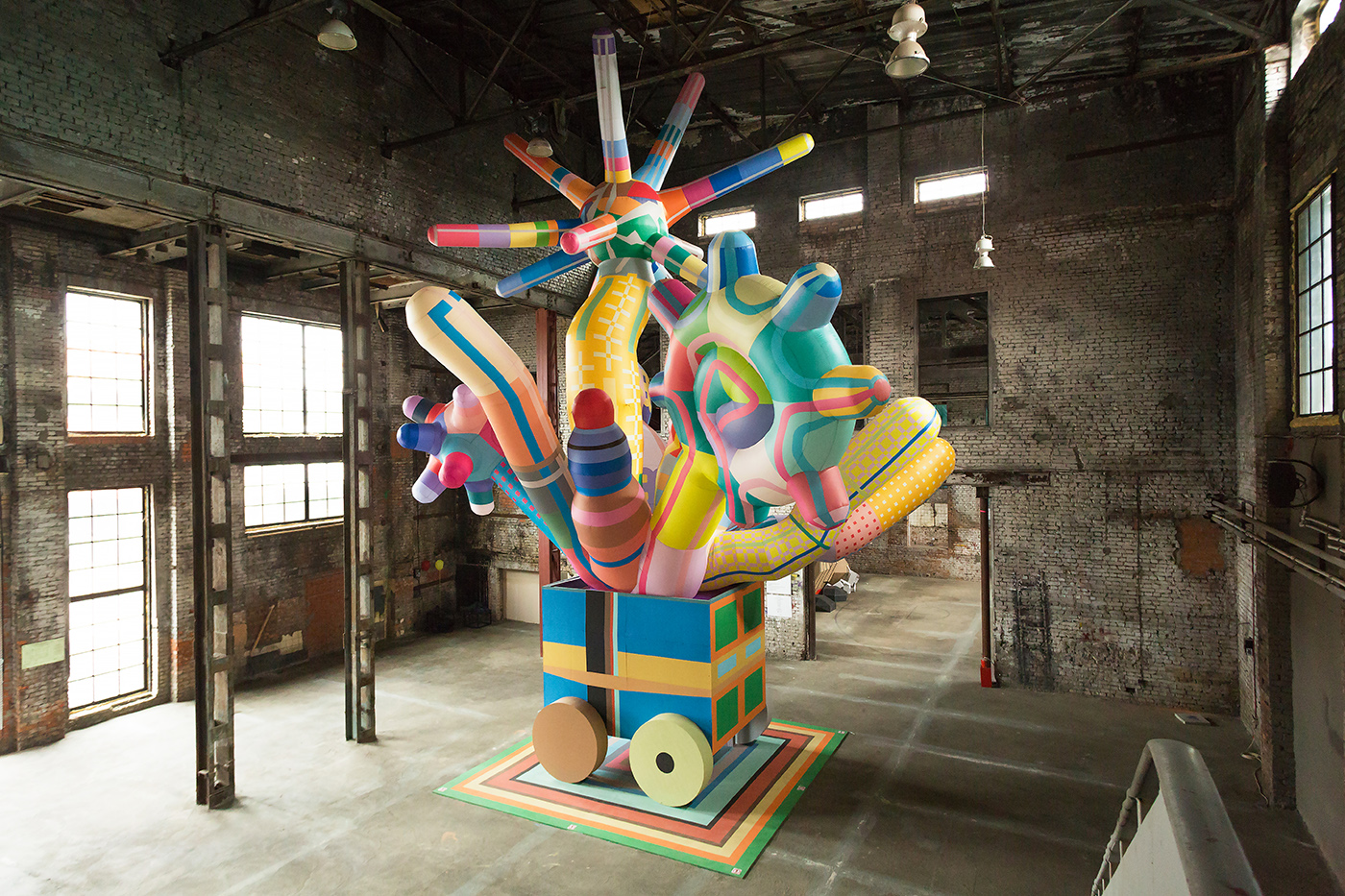



Add Comment